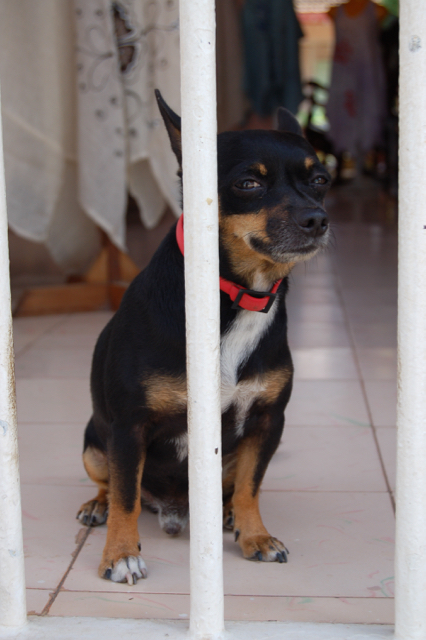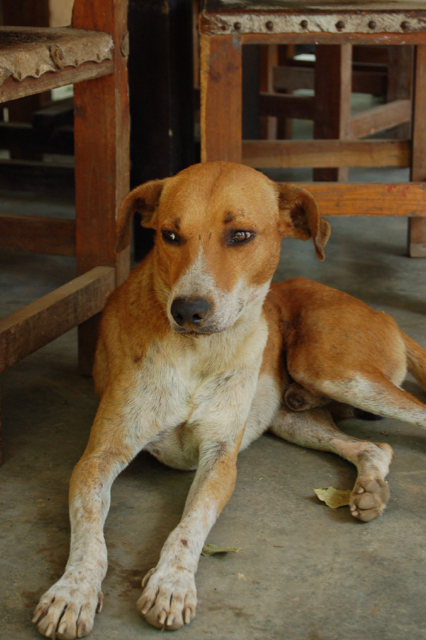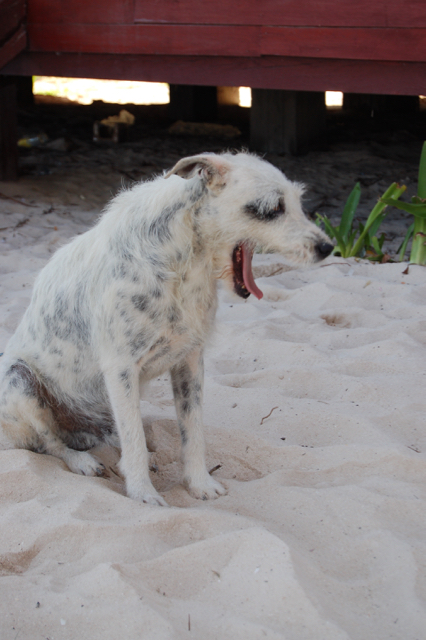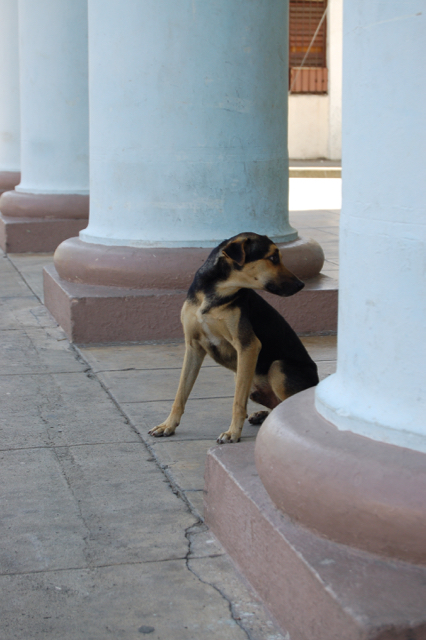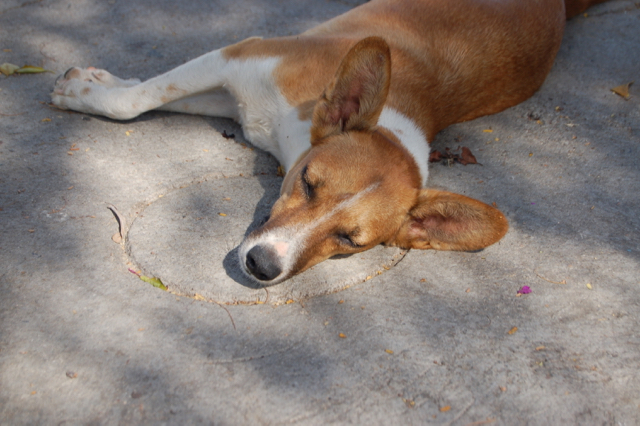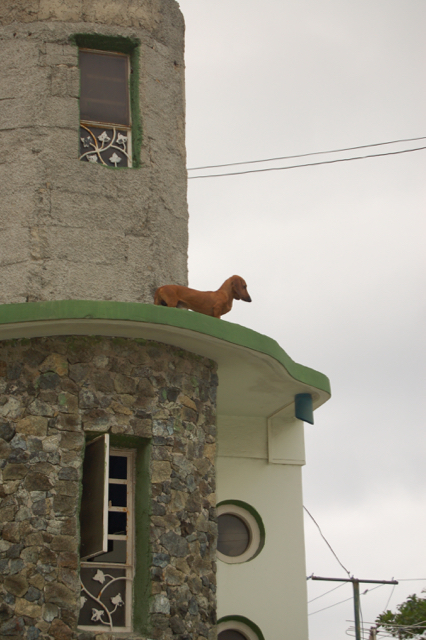no joke
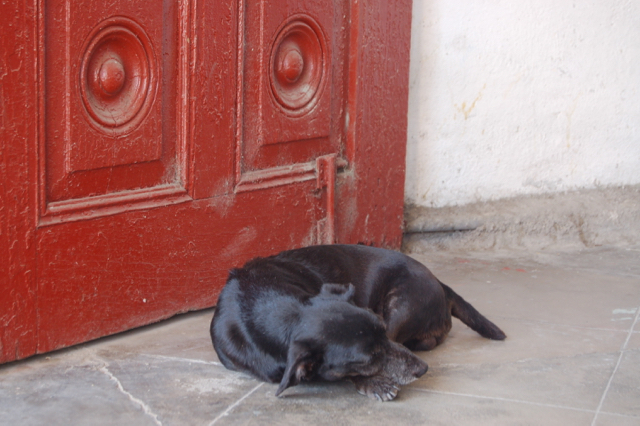
Two years ago at just about this time, I was a chaperone for 15 students from my daughter's high school en route to Cuba for an 18-day cultural exploration. About half the group was vegetarian, and a sizeable subset of that group, vegans. Though there is a word for vegan in Spanish, it is not part of the Cuban vernacular, at least not along the trajectory we traveled over our time there. Anyway the existence of the word was irrelevant. The idea, the notion that multiple categories of food could be available--set in front of you, even--and yet you would choose not to eat them was what did not really translate, and translate I did, or anyway I tried.
I’m not quite ready to talk about the endless hustling to get enough porkless, non-dairy calories to sustain a small herd of teenagers without causing deep offense to the hosting Cubans in the dozens of places we visited. We’ll laugh about it someday.
Though I gamely took a portrait of my breakfast on day one, my photos from that trip, the ones that are not of groups of students sitting and standing and holding the school banner (occasionally upside down; these were for the school's newsletter) are about 81% dogs, cats and horses (these were for me), and then quite a lot of cars (for my son and my father, who longed to see a Studebaker on the hoof again). Not a whole heck of a lot of food pictures.
Food was constantly on my mind on that trip, but in a completely different way than food is often the biggest slice of my mental pie chart. Among other things, it’s a very strange experience to not be in a kitchen for the better part of a month, to not be feeding anyone directly and to turn my own feeding over to others.
Also, my experience of new places almost always involves grocery stores, feeling my way into how food works, and hearing from people who cook in that place how they go about it.
In Cuba, I found food had a very “here you go” quality. You wanted food? Here is the food. Let’s talk about something else.
Also: white bread. So much of it! Piles and piles of squishy white bread. The non-carnivores in our group basically became breadatarians, their rolls and slices supplemented by quantities of white rice. After a straight week of it, even those who think they prefer white bread and white rice to brown begin to look a little mournful and pale.
The cultural exploration that had been arranged for our group included a visit to the home of a musician, and something about her willingness to give frank answers to the students’ frank questions about issues of race, class and gender—topics absolutely off the table with most of the people we spoke with--suggested to me she was not personally content to live on white bread alone. Maybe you think this is an odd leap to make, cognitively. Maybe you have not been trying to keep 7 choosy vegetarians alive in a place that basically has no vegetables. A keen set of senses becomes keener, let me tell you.
After her presentation, I asked the same despairing yet respectful pan integral-related questions I had been asking everywhere. As I suspected, she did not look at me blankly. She sparkled more than she had already been sparkling, which is saying something. By her rough calculations there was precisely one bakery on the entire island that dealt in whole grains, and it was about ten blocks from her apartment and she was going to take us there herself RIGHT NOW. In our giant bus.
The baker, I would learn, is a Cuban who made himself a big career as a chef in the resorts of Europe and beyond. Then he came home on a mission, his bakery as much a shrine and a school as a business. He sells his bread, which is quite pricey by Cuban standards, on a sliding scale, determined to disseminate the gospel of whole grains as widely as possible to fellow nationals who are not well-acquainted with their value.
The bakery was a paradise of grains and seeds and herbs and spices; we loaded up the bus with his grissini, absurdly beautiful bread sticks fragrant with rosemary, festooned with sesame seeds or blackened with charcoal powder, and tubs of his house-ground peanut butter, that I could dole out over the coming week. When he learned I wasn’t a wheat-eater, he fixed me with a stare and told me to come back in the morning.
We really didn’t have time for me to come back in the morning.
I came back in the morning.
He made me cornbread. HE MADE ME CORNBREAD. I’m not sure I’ve really conveyed how lunar the food landscape had been up to that point. It was of course very educational and I’m not complaining (in the strictest sense, at this time). My horizons were definitely expanded. I had to learn to learn things another way. I appreciate the value of that, and the value of experiencing the feeling of being underfed. But more than I was hungry, more than I was vexed by the constant cha-cha to keep the group nourished without causing an international incident or requiring a medical evacuation (NO YOU CANNOT LIVE FOR THREE WEEKS ON THE PROTEIN IN FOUR OUNCES OF CASHEWS AND YES THAT IS PROBABLY WHY YOU HAVE TO LIE DOWN IN THE BUS NOW WHILE THE OTHERS FROLIC ABOUT), I was lonely for a kind of basic pleasure that has nothing to do with fancy food, but definitely has more nuance than “am I full?”
There were three encounters in those weeks of solid, all-day encountering that hit that spot: this bakery connection, a meal served in an artist’s home, and a visit to an organic farm terraced into the hillside and well worth the harrowing bus ride to reach it because it was beautiful and full of hope and promise and because VEGETABLES. It’s a challenge to capture the contrast between those three things and the rest of the trip, but that cornbread was all of what I was lamenting the absence of in one small, hand-held package.
The artist who made dinner for our group in her home didn’t prepare anything fancier than we had been eating everywhere else; in fact, it was exactly the same dishes. But every face in the room, faces that had maybe fallen when they saw the usual suspects laid out on the table, registered the difference with the first mouthful. I’ve thought a lot about what it was that was so immediately obvious. The nearest I can get is that it had affection in it, affection for the ingredients, and for the movement of the knife and the smells and sounds in her tiny kitchen, and for the people who would receive it.
When Alberto the baker and his wife Antonella came to the US last year, we met for a day of bready adventures in New York City. Alberto speaks no English, but is fluent in Italian as well as his native Spanish. Antonella, who is Italian, speaks Spanish but no English and prefers Italian, which I can understand some of when it’s spoken slowly but cannot really speak. By mid-morning, my brain was a tiny crystal of lactic acid, an empty change purse, a husk of its former walnut-sized glory. The proportion of gestures to spoken words definitely increased.
When I’d done my pre-search for bakers whose methodology seemed relevant to Alberto’s quest, I included Bien Cuit on the list, but neglected to make any kind of pre-arrangement. When we got to their Brooklyn storefront, the front-of-the-house staff were not interested in making introductions to anyone working in the back. Since leaving NYC in my 20s, I’ve mostly twelve-stepped myself off the compulsion to seek a workaround that drives many a city-dweller, but for cripe’s sake the man came all the way from Cuba. ‘When in Rome,’ especially if you’re Roman. They said they wouldn’t introduce us but they didn’t say we couldn’t lurk around. Everyone eventually has to leave a kitchen for some reason or another. We intercepted.
Alberto’s spirited exchange with the baker running the kitchen that day (who had no Spanish or Italian) taxed my spent walnut of a head pretty sorely but even if I am not sure I conveyed the hydration percentages or wheat strains with total accuracy, a gist and a mutual enthusiasm were conveyed (another big shout out to semaphore and gesticulation).
A few minutes later Alberto, buying various breads to sample and consider, lamented that there was nothing he could treat me to.
Which is when I saw it.
The actual cookies do not have a steam vent.
Whistling nonchalantly among the chocolate chip cookies was a mysterious nugget, almost black with chocolate, chunky in proportions, faint dusting of powdered sugar visible on top. “Salted Chocolate Buckwheat,” read the tag. It seemed impossible that the answer could be yes, but in fact this was a treat I could have. It was delicious. Dark and nutty and buttery and delicious. We were several blocks away, headed for a chilly stroll across the bridge to Manhattan, before I bit into it and realized simultaneously that I should have bought ten of them and was kind of glad I hadn’t.
Since my forays to the city are infrequent, brief and purpose-driven, the likelihood of my getting my hands on the cookie again was really slim. The cookie certainly was worth a special trip to Brooklyn; mercifully for my girth, that was a trip I never seemed to have time to make. But it was such a memorable cookie. I thought of it often.
Recently I was hauling arse through Grand Central Market to catch a train home, and screeched to a stop when I saw that in their relentless pursuit of excellence and fattening me up, Bien Cuit has thoughtfully opened a branch office right where I embark and disembark for my city excursions and the cookie was stacked up abundantly. The reunion was tearful. This time, I acquired more than one. I distributed the cookies among friends (and, accidentally, one chihuahua; message me if you need help reversing peristalsis on a canine!), instructing them to analyze the composition.
Science! We would conquer the challenge with science!
Or, as one recipient suggested, we could try Google. D’oh. There it was. Who knows how long it’s been lurking there online for me to find.
Partly because I like to share and mainly because I was afraid I would eat them all, I again distributed the cookies around town.
My friend Andrea, who happens to have been the reason we all got to go to Cuba, and who kindly ferried a package of Bien Cuit's version to Havana for the baker last month, texted me immediately upon tasting the ones I made at home. “These are NOT FUNNY,” she said.
It’s true. They are a serious cookie. The buttery chocolate seriousness is what they are all about on day one, and on the second day, should they last that long, the flavor of the buckwheat gets more pronounced. The coffee, which seems so insignificant proportionally as to be irrelevant, is like one of those camera filters that make everyone look well-rested. The cookies have crispy edges and a dense and brownie-like interior.
For science, to which I am obviously devoted, I tried to distribute the homemade version to the same people I had shared the purchased ones with. Let’s be clear: the purchased ones are a bomb-ass cookie. Everyone I give them to loves them. If you are near a Bien Cuit (now with two locations to serve you!), you should load up. And there is plenty of data to support that professionally-made foods, especially baked goods, are often hard to recreate at home. But everyone seemed to zero in on a way that the home-made version of these cookies is better, that it has that ineffable something or other, the magical mystery factor that made our 13th dinner of arroz congri, at Yamila's table, taste like none of the previous dozen.
If you watch the video at that link above, the one that takes you to the original recipe, just remember to ignore it if you also happen to make the cookies. All that thin slicing and heavy dusting with powdered sugar before baking is smoke and mirrors. THEY THINK YOU CAN’T HANDLE THE REAL DEAL. But I know you. You--those of you that are not chihuahuas, anyway--can take it.
salted chocolate buckwheat shortbread
lightly adapted from Bon Appetit magazine's version of a Bien Cuit Bakery recipe
Makes about 30 cookies.
2 cups buckwheat flour
⅓ cup natural cocoa powder
1 tablespoon baking powder
1½ cups (lightly packed) light brown sugar
1 cup (2 sticks) unsalted butter, at cool room temperature
6 ounces bittersweet (60-70%) chocolate, finely chopped
2 teaspoons brewed espresso or strong coffee
Flaky sea salt for sprinkling
Preheat oven to 350°. Line a rimmed baking sheet with parchment paper.
Whisk flour, cocoa powder, and baking powder in a medium bowl; set aside. Using an electric mixer on medium-high speed, beat brown sugar and butter in a large bowl until light and fluffy, about 4 minutes. On low speed, gradually add the combined dry ingredients and continue to mix until no dry areas are obvious. Add the chopped chocolate and coffee and beat on low speed until just blended.
Transfer dough (it will be crumbly at this point) to a piece of waxed paper and lightly press it together. Divide it in fourths. Knead and compress the dough, shaping it into logs about 1½" in diameter, paying attention to tamping the ends nice and flat as well. Repeat with remaining dough.
Cut each log crosswise into 2" pieces. If they crumble a little on slicing, just smish them back together; all will be well. Place cookies onto the prepared baking sheet and hit them with a delicate sprinkle of salt crystals, pressing them lightly into the cookie tops. Bake, rotating the baking sheet(s) once halfway through, until cookies are just set and slightly slumped, about 12-14 minutes. Let cool slightly on baking sheet (they firm as they cool), then transfer to a wire rack to cool completely. You can of course dust them with powdered sugar if you roll that way but I don't feel they need it.
The unbaked dough can be wrapped and refrigerated for up to 5 days. Baked cookies can be stored airtight at room temperature for 2 days, or frozen for up to a month.



